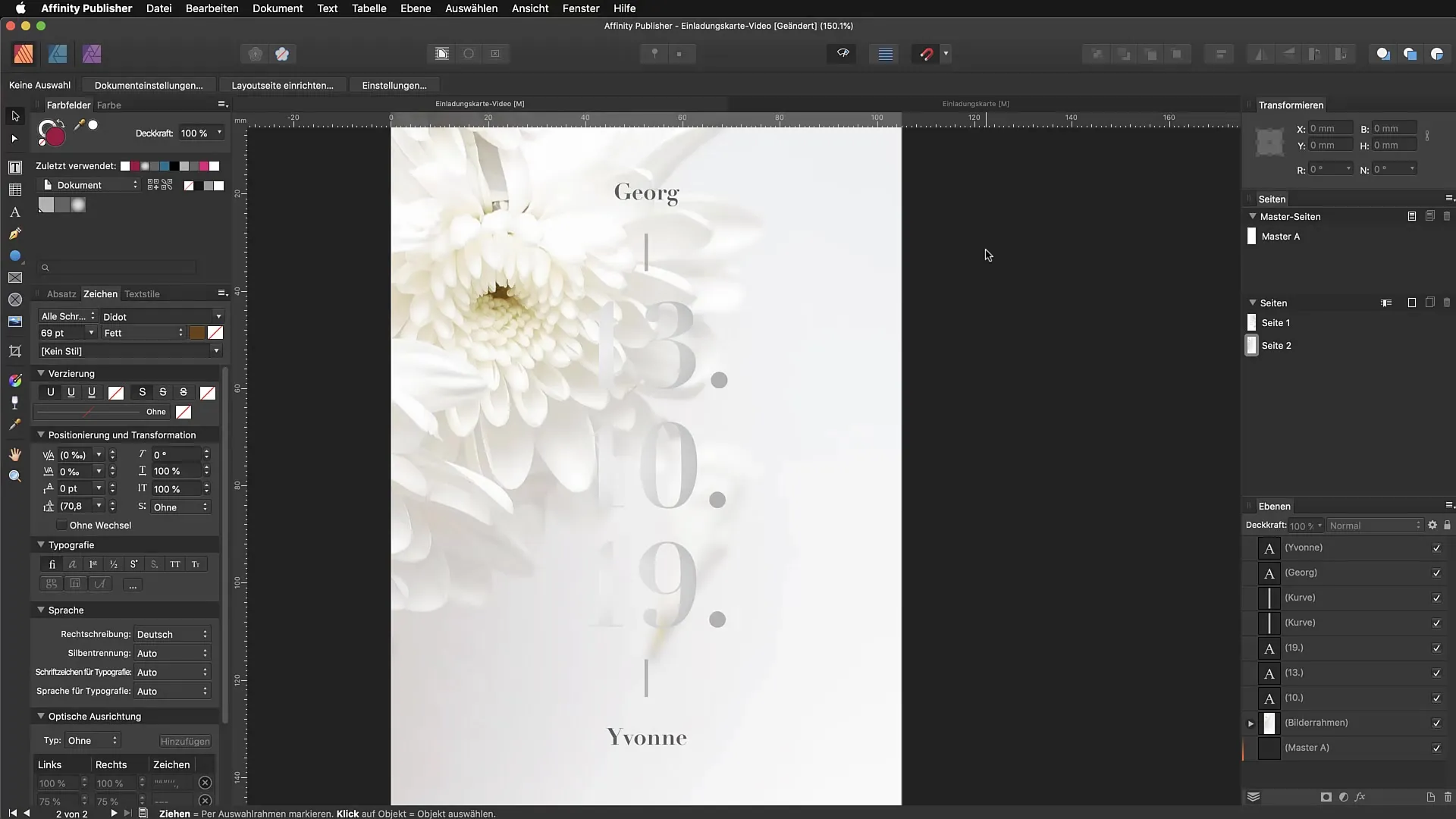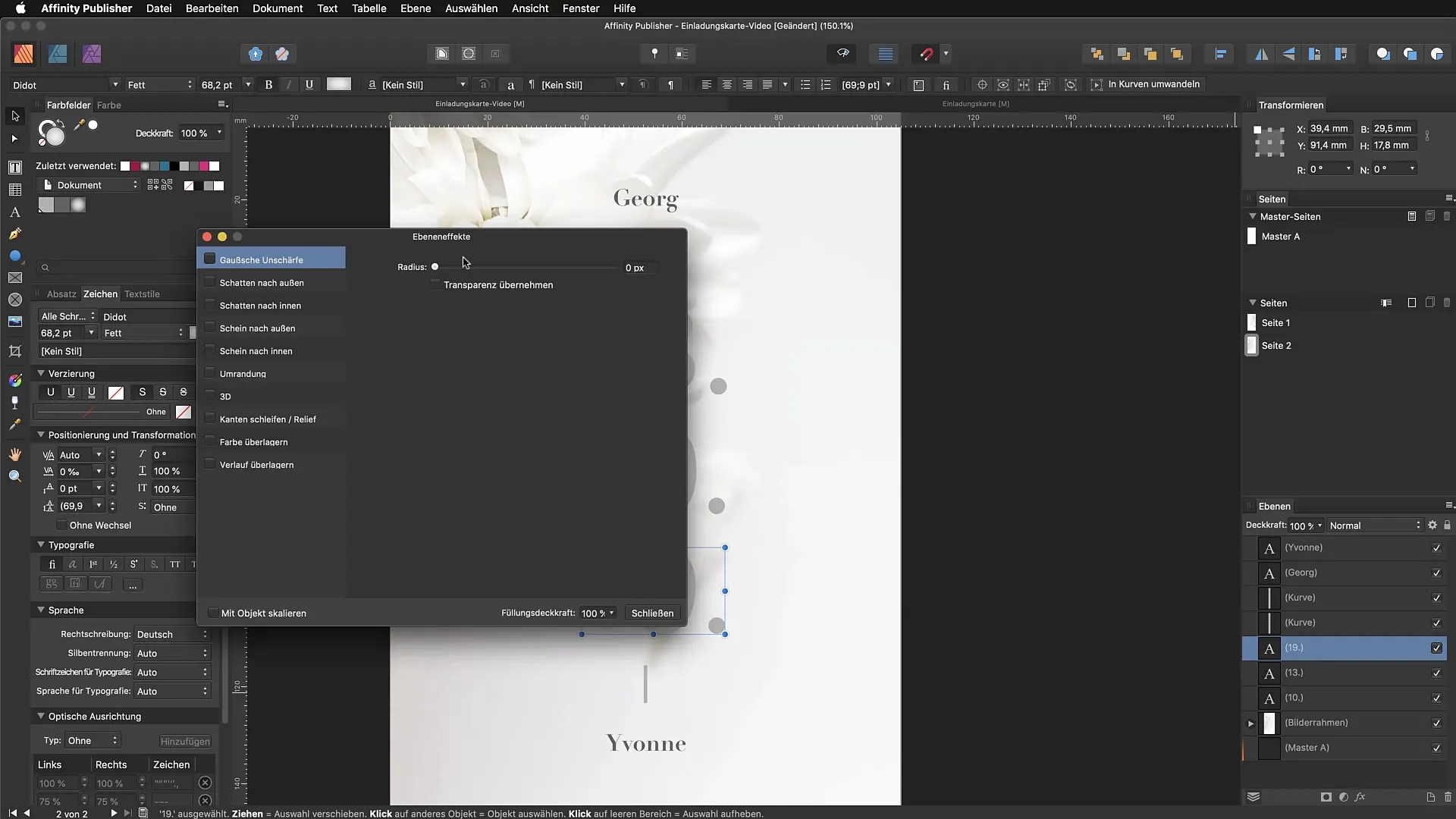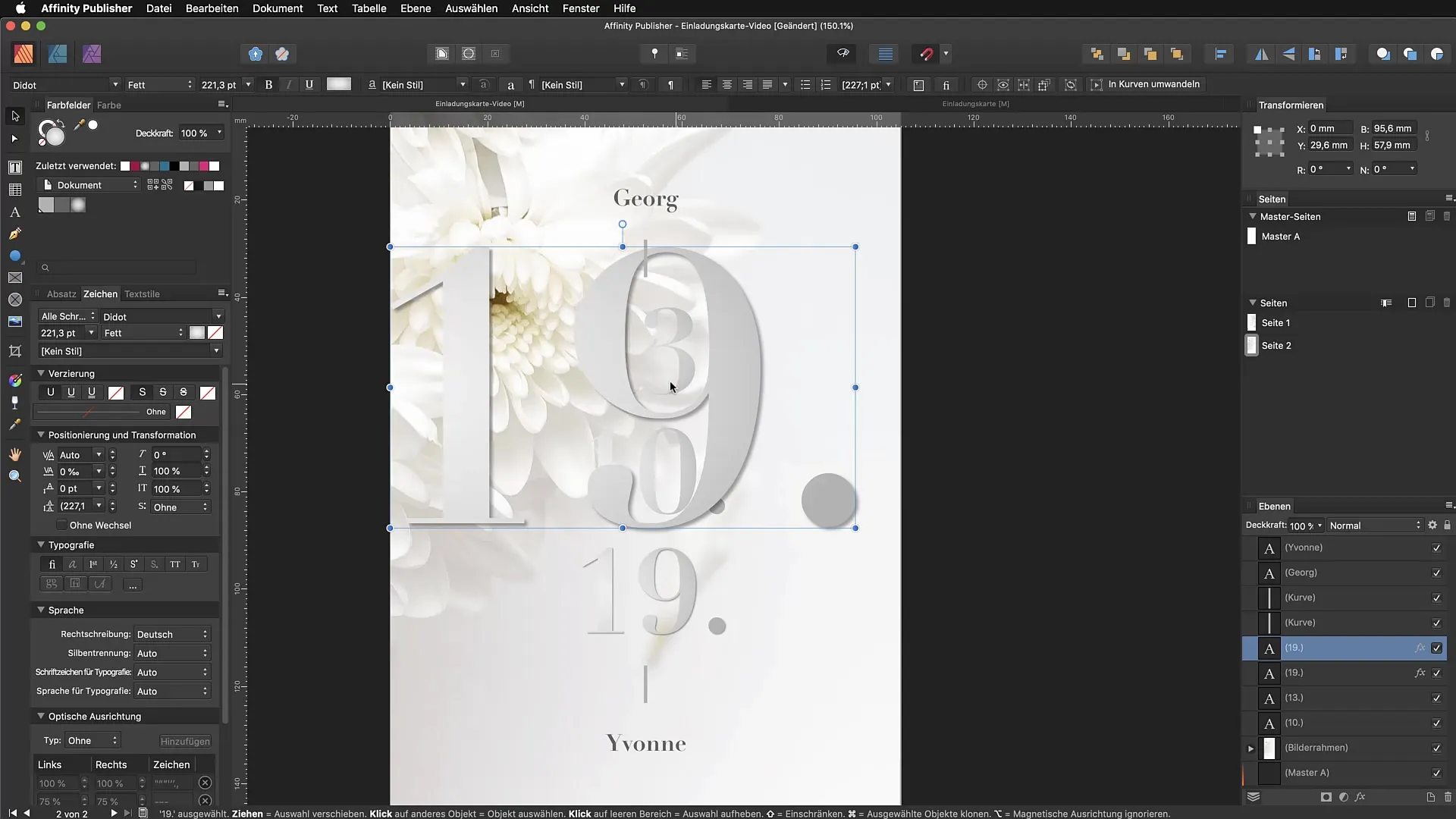Welcome to the Drop Shadowtutorial for AffinityPublisher. Here you will learn how to effectively use the shadow effect to enhance the readability of your text elements. Especially in layouts that require a clear structure and appealing visual elements, the drop shadow can make a significant difference. Let's dive together into the world of visual effects!
Key Insights
- The drop shadow gives text and objects visual depth and improves readability.
- Setting up the drop shadow requires focus on various parameters such as direction, blur, and opacity.
- The effect can be scaled proportional to the object, providing additional flexibility in design.
- There are differences between the opacity of the drop shadow and the fill opacity of the object.
Step-by-Step Guide
To apply the drop shadow, start with an existing project or create a new document. You will see that applying the drop shadow is simple and requires just a few steps.
First, activate the selection tool and select the text element or object to which you want to apply the drop shadow. The starting point is crucial for working with visual effects and ensuring readability is maintained. Here, you can always rely on the effects you use with the FX engine in Affinity Publisher.

Next, go to the layer effects, which you will find at the bottom of the panel. Click on the relevant field to display the various options for visual effects. You will discover a variety of effects, but focus initially on the outer shadow, also known as drop shadow. Check the box for the outer shadow to get a live preview. This feature makes it easy for you to see immediately how the changes look on your object or text.

Now you can start adjusting the drop shadow. For most texts, you will set the blending mode to "Multiply". This ensures that the shadow stands out well against a dark background. Experiment with the angle of the shadow to see how the light falls on your object. When you change the angle, the shadow dynamically changes, helping you find the best position for visual impact.

Be careful not to increase the opacity of the drop shadow too much. A moderate value, such as 30%, creates a natural look. Avoid setting the opacity to 100%, as this makes the effect look artificial. Most shadows should remain in the lower third of their maximum opacity to appear realistic.
Another important aspect is the radius of the drop shadow. This value affects how much the shadow is blurred. Higher values result in a softer shadow, while lower values make the shadow sharper and more defined. Try different values here to see which works best for your design.
The offset of the drop shadow is also significant, as it defines the distance between the original object and the shadow. Play with the offset values to see how the shadow is visually distributed. A moderate value helps to create a harmonious overall appearance.
If you want to apply the effect to other objects later, ensure that the "Scale Object" option is checked. This feature ensures that the effect scales proportionally with the object. Uncheck this option if you do not want this scaling. It may be useful to try different approaches depending on the desired result.

Back to the opacity slider: The effect of the drop shadow is independent of the fill opacity. If you want to change the opacity of the effect, make sure to keep an eye on the separate opacity for the drop shadow and the fill opacity of your object. This allows you to make finer adjustments.

Finally, it’s worth mentioning that transferring drop shadow effects to other objects in the current version of Affinity Publisher must be done manually, as there is no direct way to copy the effect via right-click. However, it is important to know that the recent options in the panel are saved, so you can quickly and easily apply the settings to other texts or objects.
Try out various drop shadow variants to make your design more dynamic and attractive.
Summary – Drop Shadow in Affinity Publisher
In this guide, you have learned how to effectively use the drop shadow in your designs. You have discovered the key settings that enhance readability and give your layout a professional touch. Test different combinations and find the style that best suits your project.
FAQ
How can I apply the drop shadow to my object?Open the layer effects and check the box for the outer shadow.
Can I adjust the opacity of the drop shadow?Yes, you can adjust the opacity for the drop shadow separately to achieve the desired effect.
How does the radius affect the drop shadow?A higher radius results in a softer shadow, while a lower radius makes it sharper.
Can I simply copy the drop shadow and paste it elsewhere?No, currently this effect cannot be simply copied; it must be transferred manually.
How do I scale the drop shadow with the object?Enable the "Scale Object" option in the layer effects to adjust the drop shadow proportionally.


